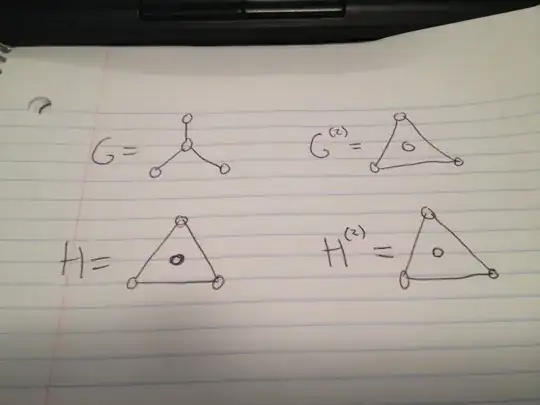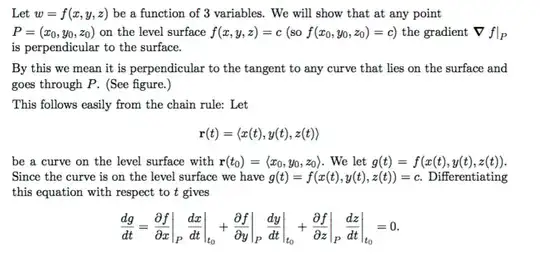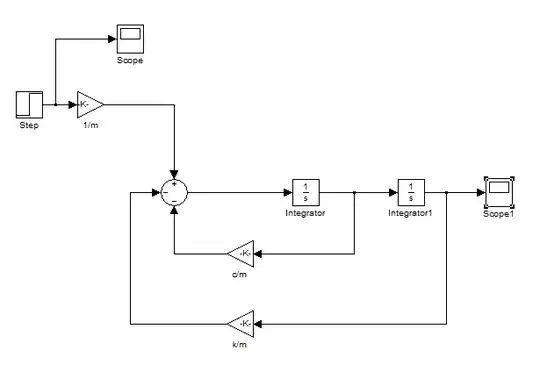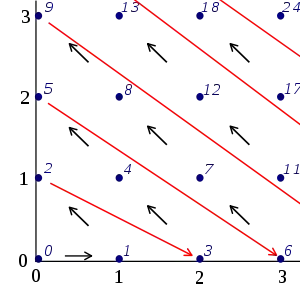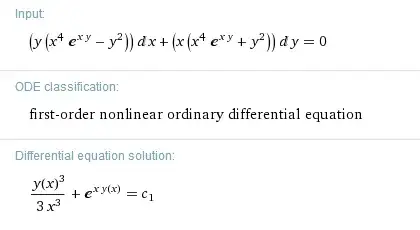Can rotations and translations of this shape
perfectly tile some equilateral triangle?
I've now also asked this question on mathoverflow.
Notes:
- Obviously I'm ignoring the triangle of side $0$.
- Because the area of the triangle has to be a multiple of the area of the tile, the triangle must have side length divisible by $5$ (where $1$ is the length of the short edges of the tile).
- The analogous tile made of three equilateral triangles can tile any equilateral triangle with side length divisible by three.
- There is a computer program, Burr Tools, which was designed to solve this kind of problem. Josh B. has used it to prove by exhaustive search that there is no solution when the side length of the triangle is $5$, $10$, $15$, $20$ or $25$. Lengths of $30$ or more will take a very long time to check.
- This kind of problem can often be solved be a colouring argument but I've failed to find a suitable colouring. (See below.)
- Lee Mosher pointed me in the direction of Conway's theory of tiling groups. This theory can be used to show that if the tile can cover an equilateral triangle of side length $n$ then $a^nb^nc^n=e$ in the group $\left<a,b,c\;\middle|\;a^3ba^{-2}c=a^{-3}b^{-1}a^2c^{-1}=b^3cb^{-2}a=b^{-3}c^{-1}b^2a^{-1}=c^3ac^{-2}b=c^{-3}a^{-1}c^2b^{-1}=e\right>$. But sadly it turns out that we do have that $a^nb^nc^n=e$ in this group whenever $n$ divides by $5$.
- In fact one can use the methods in this paper of Michael Reid to prove that this tile's homotopy group is the cyclic group with $5$ elements. I think this means that the only thing these group theoretic methods can tell us is a fact we already knew: that the side length must be divisible by $5$.
- These group theoretic methods are also supposed to subsume all possible colouring arguments, which means that any proof based purely on colouring is probably futile.
- The smallest area that can be left uncovered when trying to cover a triangle of side length $(1,\dots,20)$ is $($$1$$,\,$$4$$,\,$$4$$,\,$$1$$,\,$$5$$,\,$$6$$,\,$$4$$,\,$$4$$,\,$$6$$,\,$$5$$,\,$$6$$,\,$$4$$,\,$$4$$,\,$$6$$,\,$$5$$,\,$$6$$,\,$$4$$,\,$$4$$,\,$$6$$,\,$$5$$)$ small triangles. In particular it's surprising that when the area is $1\;\mathrm{mod}\;5$ one must sometimes leave six triangles uncovered rather than just one.
- We can look for "near misses" in which all but $5$ of the small triangles are covered and in which $4$ of the missing small triangles could be covered by the same tile. There's essentially only one near miss for the triangle of side $5$, none for the triangle of side $10$ and six (1,2,3,4,5,6) for the triangle of side $15$. (All other near misses can be generated from these by rotation, reflection, and by reorienting the three tiles that go around the lonesome missing triangle.) This set of six near misses are very interesting since the positions of the single triangle and the place where it "should" go are very constrained.
